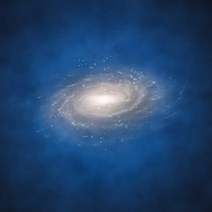An extraordinary mission is being prepared, and yet there are many unknowns. NASA’s Stardust is tearing along space at 10 kilometers per second, 300 million kilometers away from Earth. In front of it, a tiny spot of light is coming closer, the comet Tempel 1. The meeting will take place on February 14, the probe flying by the comet at a distance of 200 kilometers.
Even though other similar encounters were already performed, producing valuable data, this one is a bit special. Indeed, Tempel 1 was already visited, by the probe Deep Impact. It was on July 4, 2005; Deep Impact, when flying by the comet, delivered an impactor to its surface, to study its composition. It crashed at the speed of 30,000 kilometers per hour, creating a huge explosion, filmed by the probe… About 10,000 tons of ice and dust were ejected, leaving a 30 meter wide crater behind: it was not photographed by the probe.

Then came the idea to visit Tempel 1 once more with another probe, which had just successfully achieved its mission: Stardust. Stardust left the Earth twelve years ago, in February 1999, and crossed the comet Wild 2 on December 31, 2003. The spacecraft was then put in hibernation on its slow journey around the Sun. In 2007, the probe was awakened and it progressively started to come closer to Tempel 1.
The Stardust spacecraft may capture an image of the crater created by the impactor, but it is not the purpose of the mission. The comet lost gas and dust at its closest passing of the Sun; how has Tempel 1 evolved? We might have the answer this February 14, but the success of the mission is not guaranteed: the comet rotates itself in about 40 hours, and in 2005, Deep Impact only photographed half of its surface.
Provided that the timing is perfect, the probe should be able to photograph the areas Deep Impact flew by.
